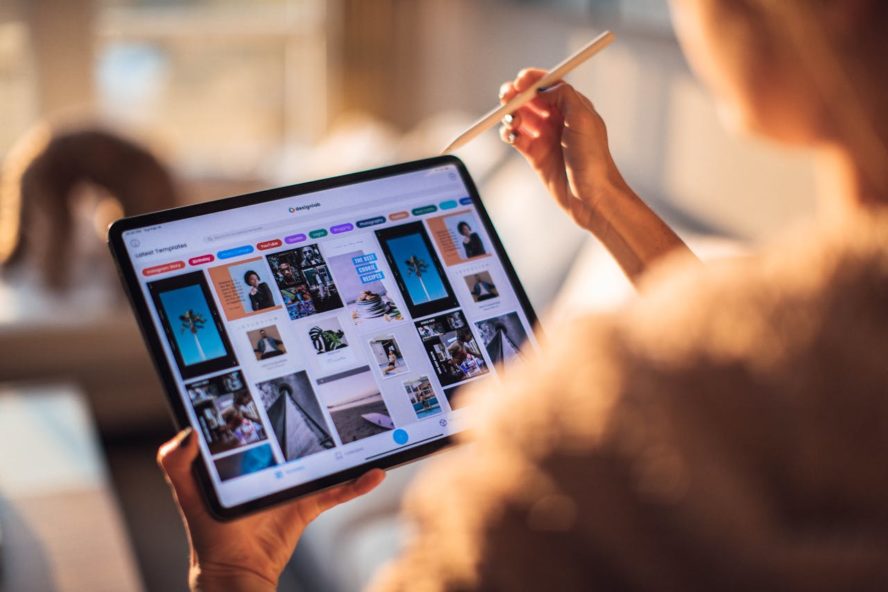The intersection of fashion and technology is a fertile ground for innovation, with cutting-edge advancements transforming how designers create collections. From AI-driven design tools to sustainable fabric innovations, technology is empowering fashion designers to push the boundaries of creativity and efficiency.
Many fashion retailers and service providers are creating their own tech solutions to help serve their customers. This may seem like a daunting project, but in reality, there are many companies that assist with the MVP design and development process to make your idea come to life. Once such company that offers MVP development for small and medium-sized businesses is CyberCraft Inc. which helps businesses quickly launch products with essential features to gather user feedback and validate market assumptions.
Do you want to develop the next tech solution for the fashion industry?
Here’s a look at the latest technological trends that are shaping the future of fashion design.
- AI and Machine Learning in Design
Artificial Intelligence (AI) and Machine Learning (ML) are revolutionizing the design process. These technologies can analyze vast amounts of data from past collections, market trends, and consumer preferences to provide designers with insights and predictions. For example, AI-driven tools like Heuritech and Stitch Fix use image recognition and data analysis to forecast trends and consumer behavior. This enables designers to make data-informed decisions, ensuring their collections resonate with target audiences.
- 3D Design and Virtual Prototyping
3D design software is transforming the way collections are created, allowing designers to visualize and iterate on their ideas without the need for physical samples. Tools like CLO 3D and Browzwear let designers create detailed, true-to-life digital garments, complete with accurate textures and fabrics. MaketheDot offers digital mood board creation. This not only speeds up the design process but also reduces waste, as fewer physical prototypes are needed.
- Sustainable Materials and Fabric Innovations
Sustainability is a driving force in today’s fashion industry, with technology playing a crucial role in developing eco-friendly materials. Innovations such as bio-fabricated leather, produced by companies like Modern Meadow, offer sustainable alternatives to traditional animal hides. Similarly, Mylo by Bolt Threads is a leather-like material made from mycelium, the root structure of mushrooms. These materials provide designers with sustainable options that do not compromise on quality or aesthetics.
- Augmented Reality (AR) and Virtual Reality (VR)
AR and VR technologies are enhancing the way designers present their collections and engage with consumers. Virtual fashion shows and digital showrooms, powered by platforms like Bigthinx and Obsess, offer immersive experiences that can reach a global audience without the logistical challenges of physical events. For designers, AR and VR tools also enable virtual fittings and try-ons, allowing for real-time adjustments and feedback.
- Digital Fabric Printing
Digital fabric printing is revolutionizing textile design, enabling designers to create intricate patterns and vibrant colors with precision and efficiency. This technology allows for on-demand printing, reducing excess inventory and waste. Companies like Kornit Digital offer advanced printing solutions that are both sustainable and versatile, supporting a wide range of fabrics and designs.
- Blockchain for Supply Chain Transparency
Blockchain technology is enhancing transparency and traceability in the fashion supply chain. By providing a secure and immutable record of a garment’s journey from production to retail, blockchain helps designers ensure the ethical sourcing of materials and fair labor practices. Platforms like Provenance and IBM’s Food Trust are pioneering blockchain applications in fashion, fostering greater trust and accountability.
- Smart Textiles and Wearable Technology
The integration of electronics into textiles is creating new possibilities for fashion design. Smart textiles, embedded with sensors and conductive threads, can monitor health metrics or change color in response to environmental stimuli. Wearable technology, such as Google’s Project Jacquard, allows for interactive garments that can control devices and provide haptic feedback. These innovations are opening up new realms of functionality and user experience in fashion.
- Customizable and On-Demand Fashion
Technology is enabling more personalized and on-demand fashion experiences. Customization platforms, like Unmade, allow consumers to co-create garments with designers, choosing colors, patterns, and fits to suit their preferences. This shift towards made-to-order fashion not only enhances customer satisfaction but also reduces overproduction and waste.
Conclusion
The latest technological advancements are not just tools but transformative forces that are reshaping the fashion industry. By embracing AI, 3D design, sustainable materials, AR/VR, digital printing, blockchain, smart textiles, and customizable fashion, designers can create innovative, efficient, and sustainable collections that meet the evolving demands of the modern consumer. As these technologies continue to evolve, the future of fashion promises to be more dynamic and exciting than ever.
- Good High School Letter Patches- 8 Key Characteristics - August 29, 2024
- Fashion Recruitment: Cultivating Talent in a Creative Industry - August 13, 2024
- Exploring the Intersection of Costume Design and Fashion at Parsons Q&A with Deborah Cantor - August 5, 2024
- 7 Steps To Creating Your Perfect Marketing Campaign - July 12, 2024
- What Are the Best Hair Vitamins for Women Over 50? - July 12, 2024


